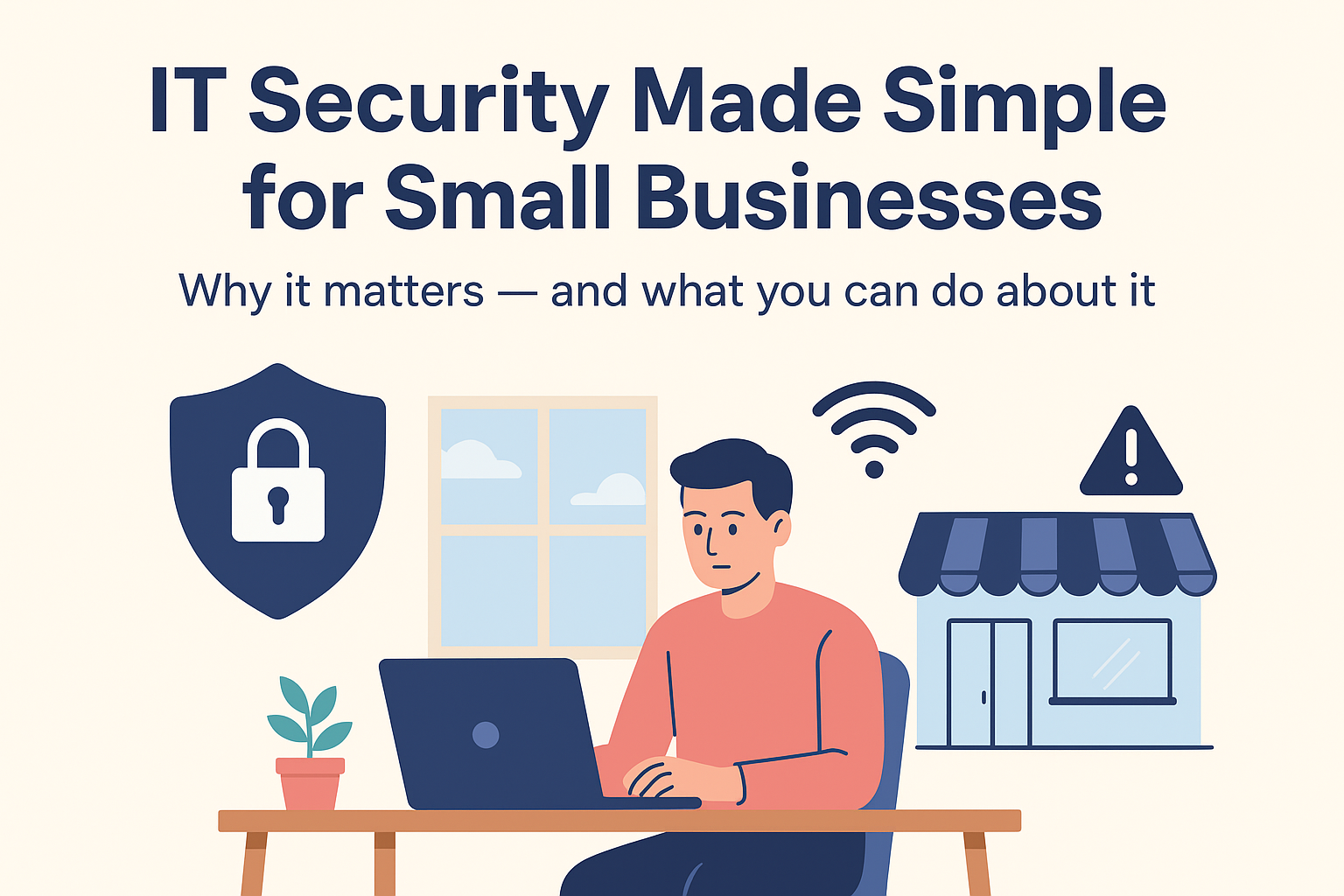This post is also available in: Bahasa Malaysia (Malay) Bahasa Indonesia (Indonesian)
Why it matters — and what you can do about it
If you own or run a small business, you probably wear many hats — manager, salesperson, HR, maybe even delivery driver on some days. In the middle of all that, IT security can feel like something only big corporations need to worry about. After all, why would a hacker target a small business?
The answer is simple: because it’s easier.

Many small businesses don’t have dedicated IT teams, expensive security tools, or strict policies in place. Cybercriminals know this, and they take advantage of it. In fact, statistics show that a significant portion of cyber attacks target small and medium-sized businesses, often causing costly downtime, loss of customer trust, and even permanent closure.
Think of your office network like your shopfront
You wouldn’t leave your shop’s front door unlocked overnight — even if you think nothing valuable is inside. Your office Wi-Fi, computers, and cloud accounts are the digital equivalent of that shopfront. If someone gets in, they can:
- Steal sensitive customer data
- Access your financial information
- Infect your computers with ransomware
- Use your systems to attack others
And just like a burglary, a cyber break-in can happen quickly — sometimes without you even knowing until the damage is done.
The good news — security doesn’t have to be complicated
Keeping your business safe online isn’t about buying the most expensive tools or hiring a full-time IT department. It’s about knowing the right steps to take and making them part of your daily operations.
That’s why we’ve created a 12-part “IT Security Made Simple” series — written in simple language for busy business owners. Each article will cover one practical step you can take to make your office network safer, starting from the basics and building up to more advanced protections.
Here’s what’s coming up in the series
- Why Your Office Wi-Fi Is a Security Risk (and How to Fix It)
- How Hackers Can Get Into Your Network — Even Without Wi-Fi
- Simple Password Rules That Actually Work
- Why Two-Factor Authentication Is Like a Deadbolt for Your Data
- Spotting Phishing Emails Before They Hook You
- Keeping Malware Out of Your Computers
- Securing Your Business Cloud Accounts
- Safe Ways to Work Remotely
- Protecting Your Business from Ransomware
- Backing Up Your Data — the Right Way
- What to Do If You Think You’ve Been Hacked
- Creating a Simple Security Policy for Your Team
Next up:
We’ll start with the most common point of entry for hackers — your office Wi-Fi network — and show you how to lock it down without making it a headache for your staff.
Stay tuned for Part 1: Why Your Office Wi-Fi Is a Security Risk (and How to Fix It).
Did you find this article helpful? Please rate and also share your thoughts in the comments section below.
